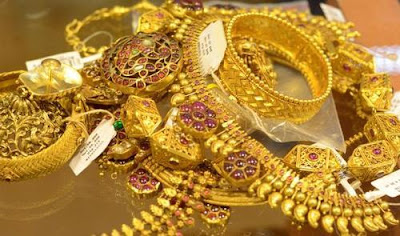Chinese seaborne steam coal imports have grown significantly in the last decade, from 17mt in 2008 to over 160mt in 2016. However, it has not been a smooth ride, with imports dropping by over 30% in 2015 to 128mt as a result of increased environmental regulations and weak domestic demand. Now, following a strong start to 2017, imports could again be subject to a range of pressures in the rest of the year.
After the sharp drop in Chinese seaborne imports of steam coal (including lignite) in 2015, imports rebounded by 28% in 2016 to total 164.9mt. Imports continued to grow robustly in 1H 2017, with Chinese seaborne steam coal imports rising 25% y-o-y to reach 83.4mt. This strong expansion partly reflected the lower base in early 2016, when coal demand from power plants was weak. However, a gradual recovery in thermal power output has supported import volumes, with thermal power generation rising 7% y-o-y so far in 2017, driven by rising industrial output, favorable steam coal prices and lower hydro power generation. Meanwhile, limited domestic coal supply has also stimulated demand for foreign coal.
The rise in imports so far this year has been supported by greater shipments from both of China’s major coal suppliers: Indonesia and Australia. Around two thirds of the increase in Chinese imports in 1H 2017 was accounted for by Indonesia, with Chinese imports from the country rising 27% to 50.8mt. While the majority of this growth was accounted for by lignite (or low-quality coal), Chinese imports of higher-quality coal from Australia have also risen firmly, by 29% y-o-y to 22.8mt. Imports from other suppliers remained relatively steady y-o-y.
Turning Up The Heat
However, the Chinese government has in recent times appeared keen to provide support to the domestic coal industry through a series of policies, as well as increase the country’s usage of ‘cleaner’ fuels into the long-term. In the latest example of this, China introduced a ban on coal imports into ‘tier-2’ ports (those approved by local governments) at the start of July 2017. As most of these ports are owned by coastal thermal power plants, steam coal and lignite imports are likely to be affected by the ban.
Run Out Of Steam?
Indeed, imports do appear to have started to ease back in recent months, with total Chinese coal imports falling y-o-y in July for the first time this year. Pressure from competition with domestic supply has also risen, with Chinese steam coal production increasing 6% y-o-y in 1H 2017, reflecting supportive policies and the improved coal price environment.
Keeping Burning?
So, Chinese coal imports have been volatile in recent years, with a range of factors impacting volumes. While there have been clear examples in recent months of positive short-term drivers, there remain a number of risks to the outlook for China’s coal imports both in the rest of 2017 and further ahead. While a gradual move towards cleaner fuels could undermine import demand in the long-term, it wouldn’t be a surprise to see Chinese coal imports continue to run hot and cold.
After the sharp drop in Chinese seaborne imports of steam coal (including lignite) in 2015, imports rebounded by 28% in 2016 to total 164.9mt. Imports continued to grow robustly in 1H 2017, with Chinese seaborne steam coal imports rising 25% y-o-y to reach 83.4mt. This strong expansion partly reflected the lower base in early 2016, when coal demand from power plants was weak. However, a gradual recovery in thermal power output has supported import volumes, with thermal power generation rising 7% y-o-y so far in 2017, driven by rising industrial output, favorable steam coal prices and lower hydro power generation. Meanwhile, limited domestic coal supply has also stimulated demand for foreign coal.
The rise in imports so far this year has been supported by greater shipments from both of China’s major coal suppliers: Indonesia and Australia. Around two thirds of the increase in Chinese imports in 1H 2017 was accounted for by Indonesia, with Chinese imports from the country rising 27% to 50.8mt. While the majority of this growth was accounted for by lignite (or low-quality coal), Chinese imports of higher-quality coal from Australia have also risen firmly, by 29% y-o-y to 22.8mt. Imports from other suppliers remained relatively steady y-o-y.
Turning Up The Heat
However, the Chinese government has in recent times appeared keen to provide support to the domestic coal industry through a series of policies, as well as increase the country’s usage of ‘cleaner’ fuels into the long-term. In the latest example of this, China introduced a ban on coal imports into ‘tier-2’ ports (those approved by local governments) at the start of July 2017. As most of these ports are owned by coastal thermal power plants, steam coal and lignite imports are likely to be affected by the ban.
Run Out Of Steam?
Indeed, imports do appear to have started to ease back in recent months, with total Chinese coal imports falling y-o-y in July for the first time this year. Pressure from competition with domestic supply has also risen, with Chinese steam coal production increasing 6% y-o-y in 1H 2017, reflecting supportive policies and the improved coal price environment.
Keeping Burning?
So, Chinese coal imports have been volatile in recent years, with a range of factors impacting volumes. While there have been clear examples in recent months of positive short-term drivers, there remain a number of risks to the outlook for China’s coal imports both in the rest of 2017 and further ahead. While a gradual move towards cleaner fuels could undermine import demand in the long-term, it wouldn’t be a surprise to see Chinese coal imports continue to run hot and cold.
 |
| Chinese Coal Imports |
















